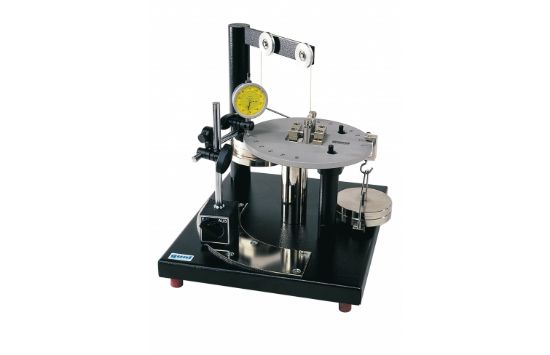GUNT Stress hypotheses are applied in the science of the strength of materials when calculating comparative stresses where unequal stresses are combined.
Product Features
- The following stress hypotheses, taking into account material properties, have been tried and proven in practice: Rankine yield criterion (direct stress hypothesis), von Mises yield criterion (change of shape hypothesis) and Tresca yield criterion (shear stress hypothesis).
- The experimental unit is used to verify these comparative stress hypotheses on test specimens made of various metals.
- A multi-axial stress state is produced at a point on the specimen and the resulting deformation is measured.
- The specimen is clamped on one end to the fixed frame, and a loading plate is clamped to the specimen on the other end.
- A weight is attached on the outer circumference of the loading plate; a balance weight compensates for the dead-load of the plate and the applied weight.
- Only direct and shearing stress occur at a point on the test specimen; shear forces are avoided.
- The loading plate has a graduation grid enabling weights to be attached at 15° increments.
- This permits purely bending moment and twisting as well as combined load moments to be achieved.
- Diametrically opposite the weight, measuring points are provided on the loading plate to measure the deformation.
- This enables the deformation at the point of maximum deflection to be measured.
- All various elements of the experiment are clearly laid-out and housed securely in a storage system.
Benefits
- Enables accurate verification of key stress hypotheses relevant in material strength science.
- Provides hands-on learning experience with real metals and multi-axial stress states.
- Facilitates precise measurement of deformation under combined loading conditions.
- Clearly laid-out and secure storage system ensures convenient and safe handling of components.
- Flexible weight positioning allows comprehensive study of bending, twisting, and combined stresses.
Why Choose the GUNT Stress Hypotheses Verification Setup?
This setup offers a thorough, practical approach to understanding and verifying fundamental stress hypotheses with real-world materials. It is designed for educators and researchers aiming to provide clear insights into stress behavior under complex loading. Its modular design and precision components make it an essential tool for strength of materials laboratories.

